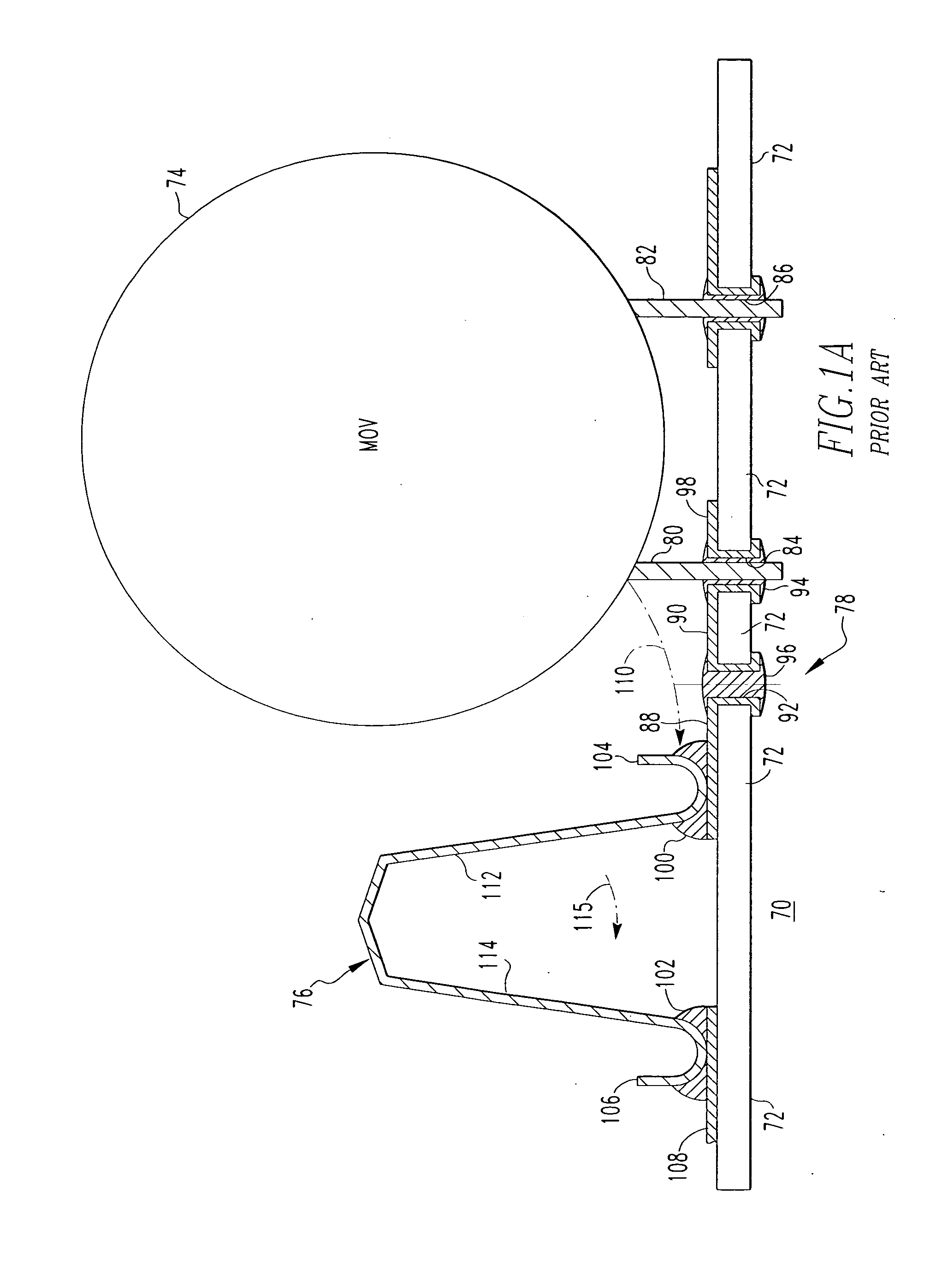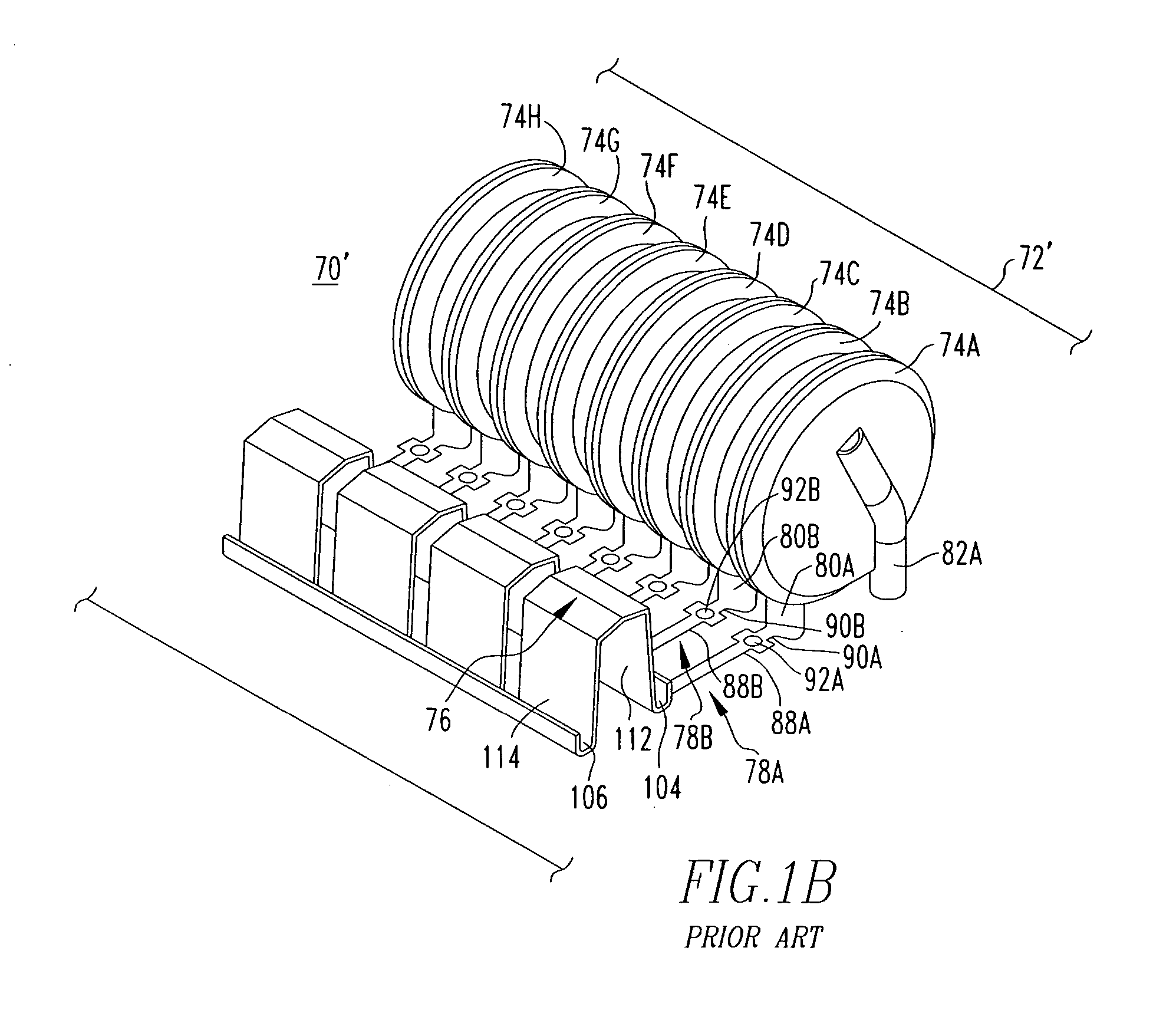Surge protection device disconnector
a technology of protection device and disconnector, which is applied in the direction of overvoltage protection resistor, emergency protection arrangement for limiting excess voltage/current, and arrangement responsive to excess voltage, etc., can solve the problems of movable, short-circuiting of electrical conductor, and dramatic drop of the impedance of the element,
- Summary
- Abstract
- Description
- Claims
- Application Information
AI Technical Summary
Benefits of technology
Problems solved by technology
Method used
Image
Examples
Embodiment Construction
[0040]FIG. 2 is a schematic diagram of a surge protection device disconnector (SPDD) 200 according to an aspect of the present invention. SPDD 200 includes an overcurrent fuse 205 that is electrically connected to a phase conductor 210 of the electrical distribution system.
[0041] The SPDD 200 includes a first branch 215A and a second branch 215B which are identical to one another. Preferably, the first and second branches 215A and 215B are each similar in structure to the SPD′70 shown in FIG. 1B and described above or the SPD shown in FIG. 1D. For clarity, only the first branch 215A will be described, but it will be understood that the second branch 215B includes identical components. The first branch 215A includes thermal fuse springs (TFS) 220A, 220B, 220C and 220D in the form shown in either FIG. 1A or FIGS. 1C and 1D which are each electrically connected to the overcurrent fuse 205 as seen in FIG. 2. The thermal fuse springs (TFS) 220A, 220B, 220C and 220D are preferably part o...
PUM
 Login to View More
Login to View More Abstract
Description
Claims
Application Information
 Login to View More
Login to View More - R&D
- Intellectual Property
- Life Sciences
- Materials
- Tech Scout
- Unparalleled Data Quality
- Higher Quality Content
- 60% Fewer Hallucinations
Browse by: Latest US Patents, China's latest patents, Technical Efficacy Thesaurus, Application Domain, Technology Topic, Popular Technical Reports.
© 2025 PatSnap. All rights reserved.Legal|Privacy policy|Modern Slavery Act Transparency Statement|Sitemap|About US| Contact US: help@patsnap.com



